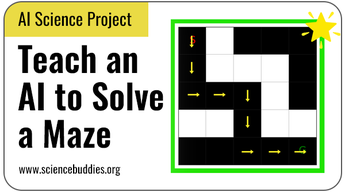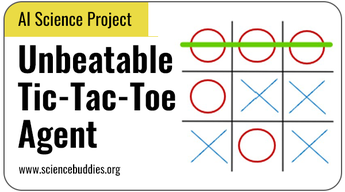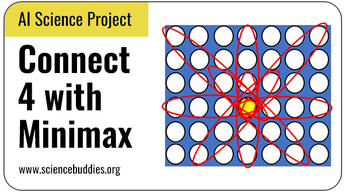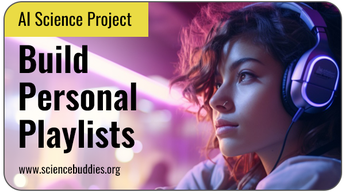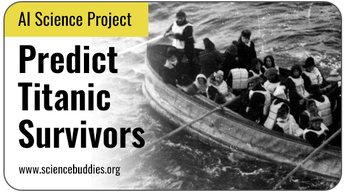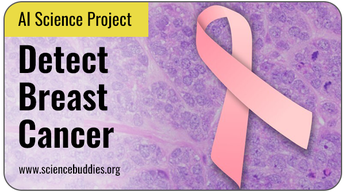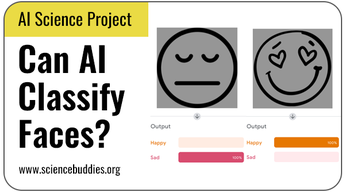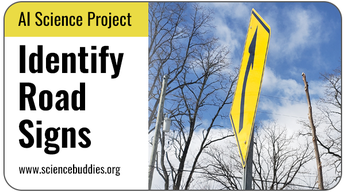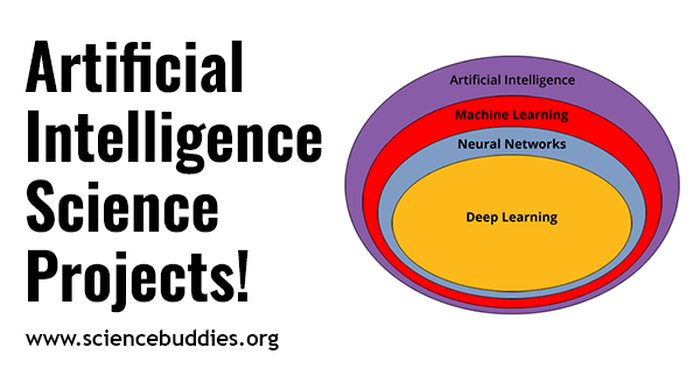Student AI and Machine Learning Projects
Student science projects to explore AI, machine learning, and artificial intelligence algorithms.
Explore Cutting-edge Science with AI Projects
Have you had a chat with a chatbot or used ChatGPT? Advancements in image- and text-creation tools have brought artificial intelligence (AI) into mainstream conversations. No longer is AI stuck in the realm of science fiction books and movies! AI is an increasingly prevalent and important part of our world, with uses ranging from medical diagnoses to content creation, facial recognition, and self-driving cars.
At the K-12 level, students can explore a range of uses for AI, learn about various types of AI algorithms and programming techniques, and experiment with projects that use different types of code or machine learning. Through hands-on projects, many of which require no prior coding experience, students can investigate to see how AI can be used to analyze data, make predictions and decisions, and learn from the process. This is an exciting area of STEM!
What is AI?
There are a number of types of algorithms and programming that fall under the "Artificial Intelligence" label. This diagram shows how some of these applications and approaches are related:
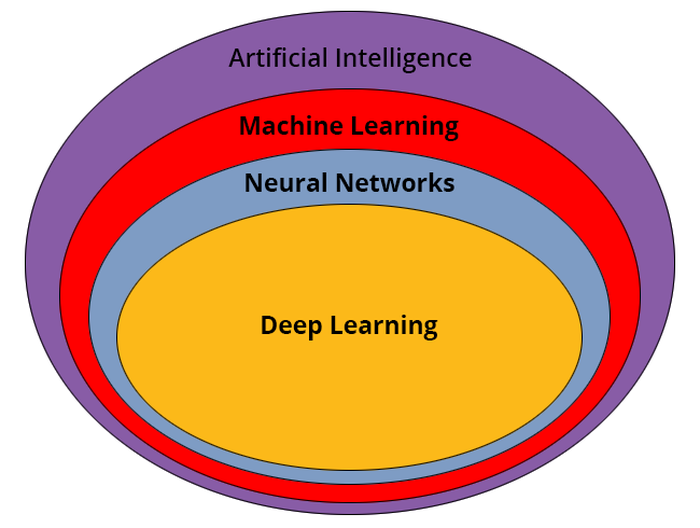
Many of the student projects below enable exploration of machine learning. Machine learning is used to train an AI agent by providing data and using algorithms that teach the AI to recognize and act upon certain patterns. When working on independent machine learning science projects, students will explore neural networks, supervised, unsupervised, and reinforcement learning and experiment with various algorithms like K-Nearest Neighbors, K-Means, Minimax, and Q-Learning.
Artificial Intelligence Science Projects
Featured AI & Machine Learning Projects
Minimax Algorithm
The Minimax algorithm is used in adversarial games and helps the computer determine the best move. The Minimax algorithm assesses potential moves, anticipates the opponent's responses, and strategically chooses the best course of action to maximize the computer's chances of winning or minimize its risk of losing.
- Can You Create an Unbeatable Tic-Tac-Toe AI Player?: Explore the use of the Minimax algorithm for 2-player adversarial games. Can you create an AI that always wins at tic-tac-toe?
- Can You Create a Strategic Connect 4 AI Opponent?: Explore the Minimax algorithm with alpha-beta pruning to create an AI player for a Connect 4 game.
K-Nearest Neighbors (KNN) Algorithm (supervised learning)
The K-Nearest Neighbors (KNN) algorithm involves making predictions by comparing a new data point to a certain number (k) of nearby data points. KNN is used for classification and regression tasks and makes predictions based on how the majority of its neighbors are categorized (for classification) or by averaging its neighbors' values (for regression).
- Can AI Predict Who Survived the Titanic's Sinking?: Apply the KNN algorithm to passenger information from the Titanic. Can AI correctly predict who survived?
- Can AI Diagnose Breast Cancer?: Create a KNN machine learning model that can assess breast tumor data and predict whether a tumor is malignant or benign.
K-Means Algorithm (unsupervised learning)
The K-Means algorithm groups similar data points together into clusters, with the goal of minimizing the differences within each cluster and maximizing the differences between clusters. This allows an AI to detect similarities and patterns that may otherwise be difficult to see. K-Means can be effective for tasks like identifying patterns or making recommendations.
- Build Personal Playlists with Machine Learning: Use the K-Means algorithm to design a program that can deliver personalized playlists. How successfully can AI choose songs you will enjoy?
Q-Learning Algorithm (reinforcement learning)
The Q-Learning Algorithm is a reinforcement learning method in which an AI learns to make decisions by using a table to remember which actions are best in different situations.
- Can Machine Learning Solve a Maze?: Experiment with variables in the programming of an AI agent that learns from its own mistakes how to solve a maze.
Neural Networks
As shown in the diagram above, neural networks are a subset of machine learning. A neural network is a type of AI inspired by the structure and function of the human brain. A neural network consists of interconnected nodes (neurons), and each node has a weight and a bias. This information is used by the network when evaluating incoming data and predicting outcomes. This type of network learns by autonomously adjusting the strength of the connections between neurons (e.g., altering the weight and/or bias).
- Think Like a Computer: Try Machine Learning: Explore how a simple neural network works in this introductory project. Walk through a paper model to see how an AI can be configured to weigh several inputs and make a decision based on math. No coding required!
- Explore Perceptrons: A Simple Type of Neural Network: Learn about a simple neural network called a perceptron that can make a yes/no decision based on several inputs. In this intermediate project, investigate ways to improve the perceptron's decision-making abilities.
Other machine learning projects
- Happy or Sad? Use Artificial Intelligence to Classify Faces: Explore how an AI system is trained by experimenting with Teachable Machine to teach a web-based tool to classify images of faces as "happy" or "sad."
- Identify Road Signs with Machine Learning: Use machine learning to train a system to recognize different types of road signs. (A short activity is also available.)
Lesson Plans
The following lessons support educators in exploring AI in the classroom.
- Computer Simulation of an Artificial Neural Network: This lesson for high school students covers artificial intelligence, neural networks, and machine learning. Students run simulations of a perceptron neural network and are challenged to identify weaknesses and find ways to improve the system.
- Happy or Sad? Exploring Bias in Machine Learning: Explore machine learning with Teachable Machine and teach a computer to distinguish between happy and sad faces while investigating how repeatable and systematic bias errors can appear in machine learning.
AI Project Video Resources
The following STEM videos provide an overview of some of the algorithms and AI models used in the projects highlighted above:
The following STEM videos support individual student projects highlighted above:
Vocabulary
The following word bank contains words that may be covered when teaching about simple machines using the lessons and activities in this resource.
- Accuracy
- Adversarial game
- Agent
- Algorithms
- Artificial Intelligence (AI)
- Bias
- Classification
- Decision boundary
- Depth of exploration
- Dimensionality
- Environment
- Game state
- Game tree
- Heuristic search algorithm
- Inputs
- K-Means algorithm
- K-Nearest Neighbors (KNN) algorithm
- Learning data
- Machine learning
- Minimax algorithm
- Neural network
- Node
- Noise
- Normalization
- Node
- Outputs
- Penalty
- Perceptron
- Principal Component Analysis (PCA)
- Q-Learning algorithm
- Recursive
- Reward
- Scaling
- Supervised learning
- Terminal state
- Threshold
- Unsupervised learning
- Weight
Related Resources
For additional resources to explore computer science, physical computing, and coding with student projects, see the following:
Categories:
You Might Also Enjoy These Related Posts:
- Teach Genetics and Heredity with Free STEM Lessons & Activities - Genetics Science Projects
- Star Wars Projects for May the 4th Be With You Science
- 25+ Earth Day Science Experiments and Activities
- Arduino Science Projects and Physical Computing
- Spring Science Projects: 26 Science Experiments for Spring
- 25+ Robotics Projects, Lessons, and Activities
- March Madness Basketball Science Projects: Sports Science Experiments
- 15 Density Science Experiments


